travel and stay in Merida yucatan
32 Of the Best Yucatan and Mayan Dishes
The cuisine of Mexico’s Yucatan Peninsula, known as Yucatecan cuisine, is a unique mix of influences from Europe, Mexico, the Caribbean, and ancient Mayans
The cuisine of Mexico’s Yucatan Peninsula, known as Yucatecan cuisine, is a unique mix of influences from Europe, Mexico, the Caribbean, and ancient Mayans
The regional cuisine of Mexico’s Yucatan Peninsula, known as Yucatecan cuisine, is a unique mix of influences from Europe, Mexico, the Caribbean, and the influence of the ancient Maya. Some of the dishes in this article are unique to Yucatan and difficult to find outside the peninsula, while others are eaten throughout Mexico.
Before the colonial invasion in the 16th century, Yucatan cuisine was dominated entirely by traditional Mayan food. As a result, many ingredients that play an essential role in Yucatecan cuisine today were not present at that time, such as pork, lard, and the Seville orange.
Tomatoes, turkey, chilis, corn, and pumpkins are pre-colonial and the foundation of Yucatan cuisine.
After the Spanish colonization of the region, many other international influences, especially French, Dutch, Lebanese, Cuban, and even British, have helped shape what today’s Yucatan cuisine is.
Like many world cuisines, authentic Mayan food has transformed and become a fusion over the years. However, original recipes are almost impossible to discern, with the oldest Mayan cookbooks dating back only to the 19th century.
Below, you will learn about the dishes and ingredients of traditional Yucatecan cuisine.
Knowing these Yucatan food essentials will help you understand more about the regional dishes you can eat.

Chiles habaneros are among the hottest peppers used in Mexico; these chiles are popular in Yucatan’s food. When dining, you’ll always get a side of habanero salsa.
Yucatan’s food is not very spicy on its own. Still, adding a few drops of habanero salsa can get very spicy quickly.
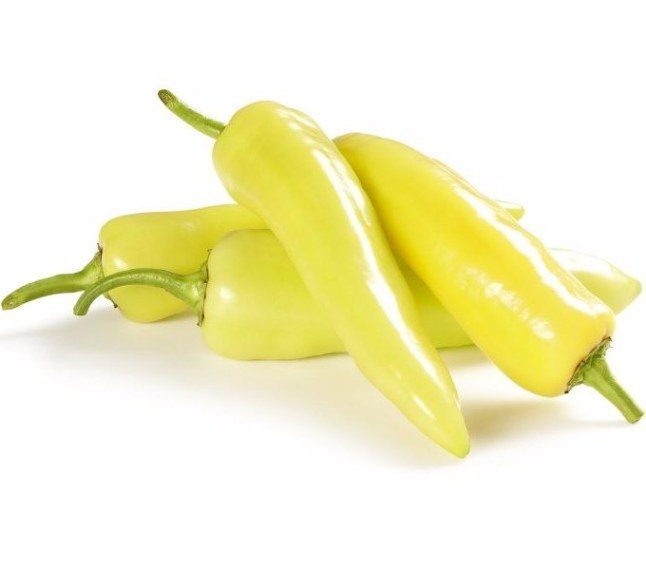
x’catik chili is a milder, though still a bit spicy, Yucatan’s chili pepper. They look like bright yellow-green banana pepper and have a slightly sweet flavor.
Pronounced ahh-she-oh-tay, axiote is made by crushing the seeds of the Bixa Orellana shrub. This evergreen plant is native to Yucatan and is used in many traditional dishes.
Axiote, an Aztec word, goes by other names outside Mexico, including annatto and achuete. It has a flavor close to a red peppercorn but with a bit more bitterness and a mild peppermint scent. Besides adding flavor, it gives dishes a red color.
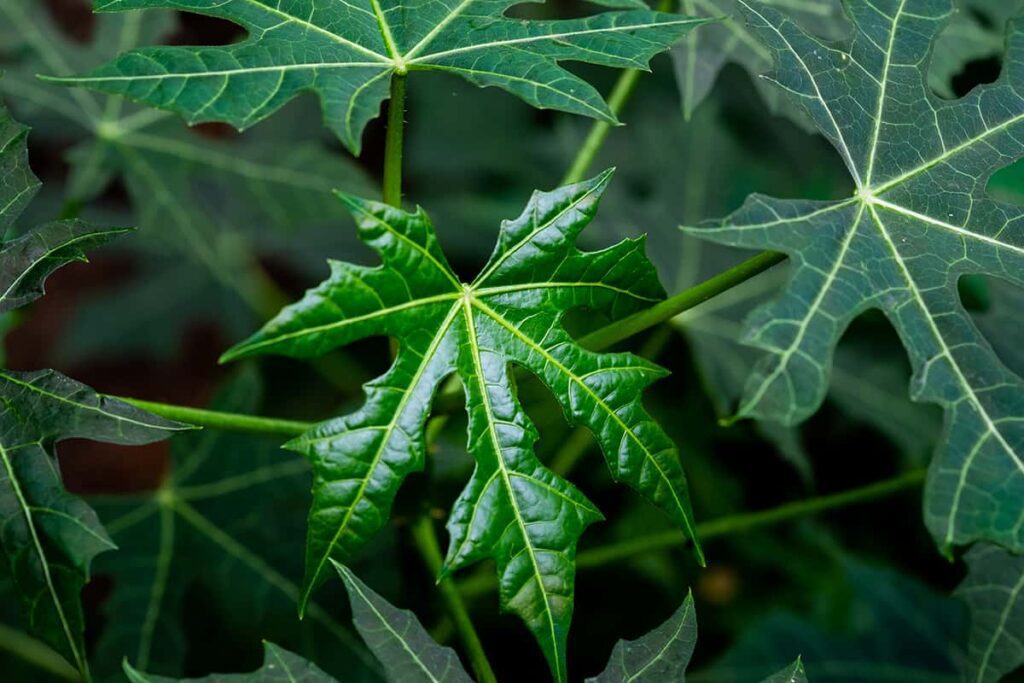
Chaya comes from the Cnidoscolus chayamansa tree, native to the Yucatan Peninsula. The tree grows year-long, so chaya (AKA Mexican tree spinach) is always available and used in many dishes.
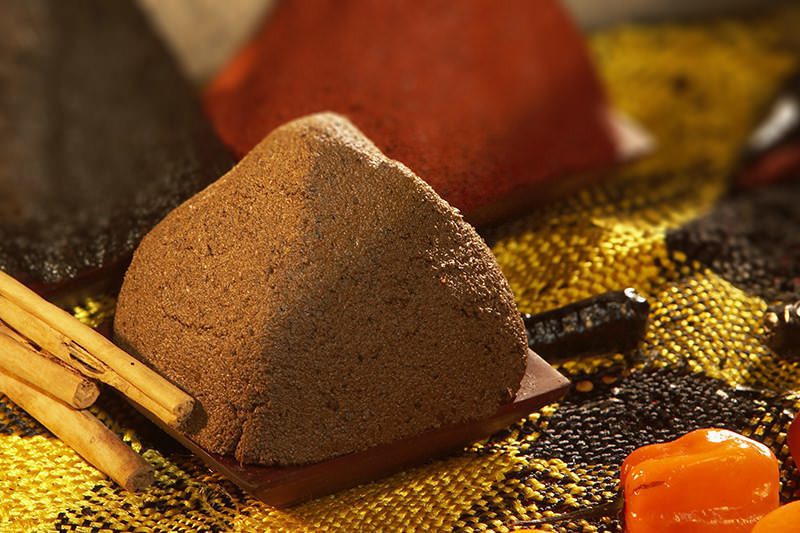
In Yucatan’s markets, you’ll see towers of color in large pots that look like paste. These are recados. Spices blended together to form the perfect base for specific Yucatecan dishes.
Recado Negro is a black spice paste colored by dried chilis being charred. Then those blackened chilis are ground into the blend.
Recado Blanco is made with cumin, ground cilantro seeds, oregano, and more.
“Fun fact: Recado in Spanish means message, so I'm not sure why this paste is called recado.”
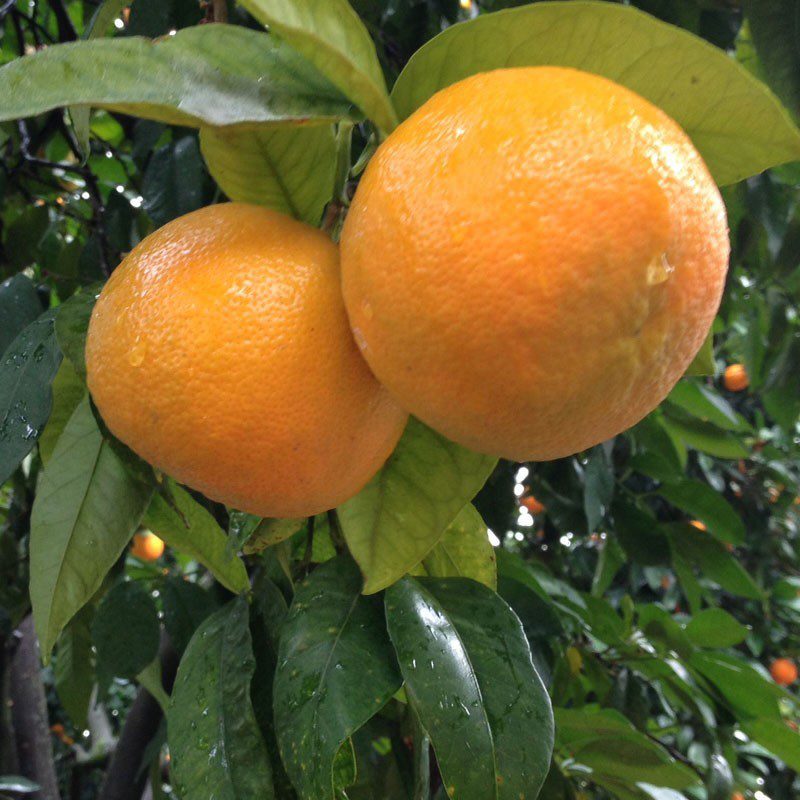
Citrus fruit was not present in the Americas until after colonization. However, the Seville orange, a sour, low-sugar version of the regular orange, has become an essential ingredient in Yucatan’s marinades, drinks, and salsas.
They are called Seville oranges because they are natives of Seville, Spain.
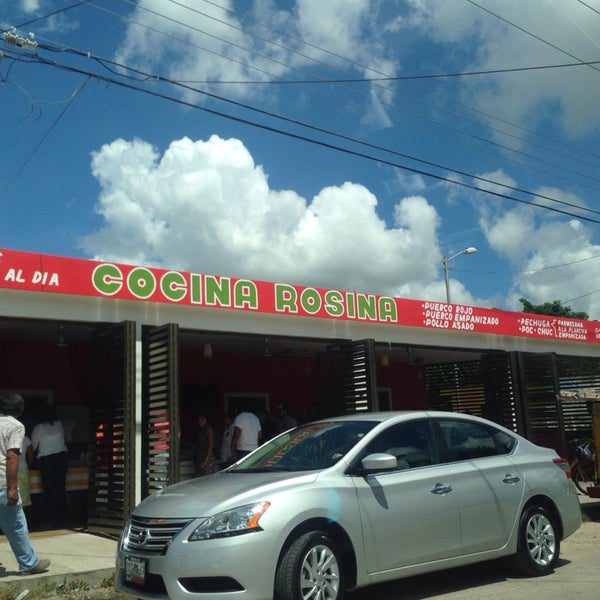
Cocinas economicas are all around the Yucatan, especially in non-touristy neighborhoods where you will find typical Yucatecan and Mexican home cooking at incredibly affordable prices ($2 – $3 USD for a complete meal).
It’s simple food, generally with cheap ingredients. Still, when you find an excellent cocina economica, your wallet and belly will be pleased!
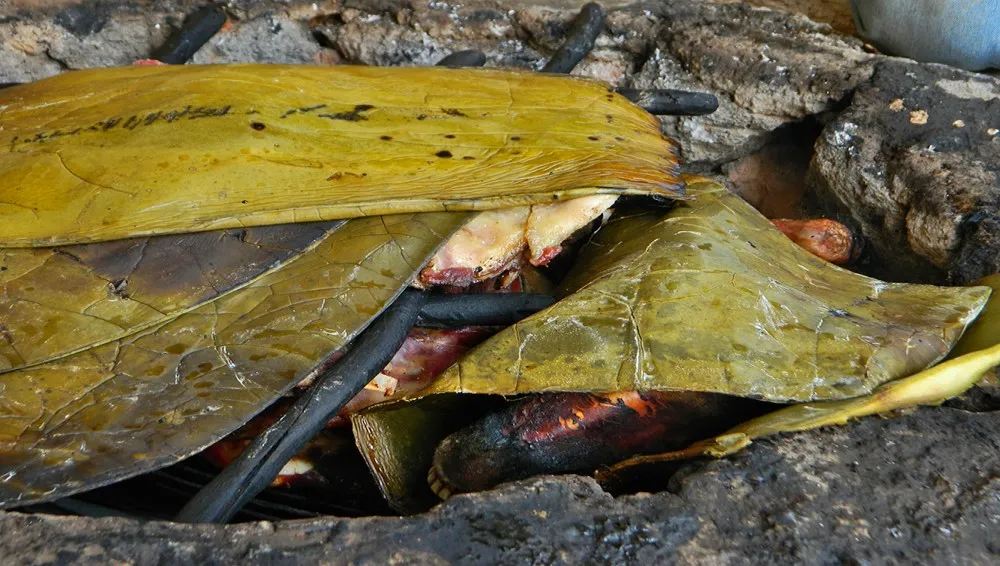
A pib is the traditional Mayan oven. It involves digging a hole, filling it with hot coals, and burying the thing you want to cook wrapped in banana leaves.
“This "pit" oven-style cooking probably did not originate in Yucatan. During a trip to Istanbul, I tried an original Turkish dish consisting of lamb cooked in a hole, similar to the Pib. In Mexico City, lamb is cooked the same as in Turkey, called barbacoa.”
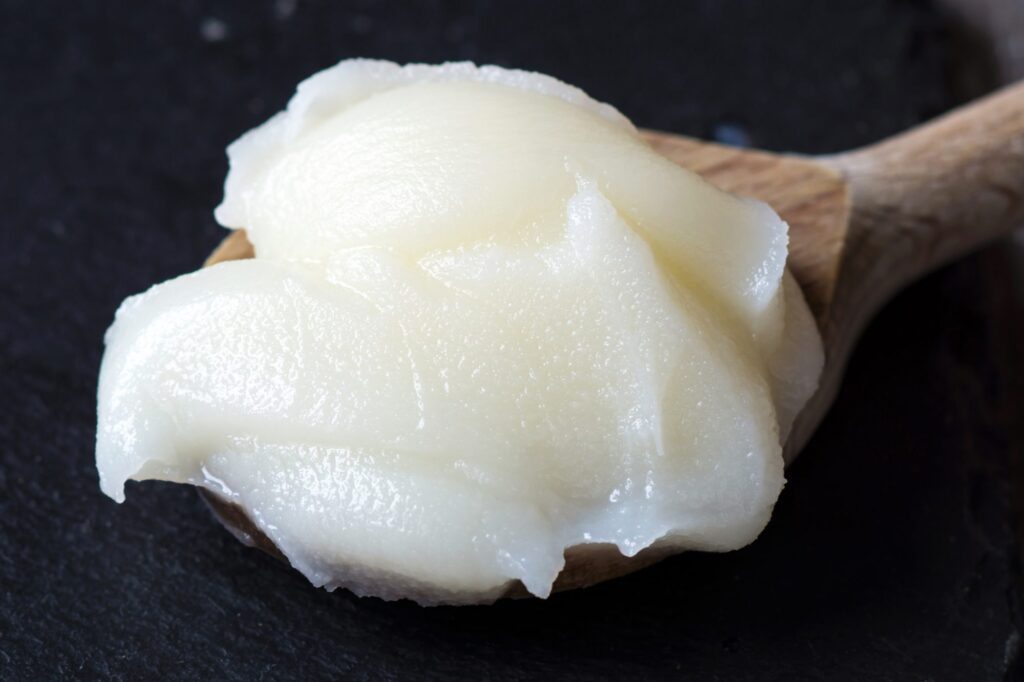
Lard (Rendered Pork Fat) is not a Yucatan-specific ingredient. Still, the rich flavors of many dishes are due to lard being the primary fat used throughout. Vegetarians may find it challenging to eat traditional Yucatan cuisine in the region. You’ll need to ask what oil is being used before you order. For meat-eaters, the use of lard makes everything better.
Even the basic “masa” corn dough that is the base for many dishes (like tamales) is typically made with lard. It’s hard to avoid.

The word torta, in Spanish, translates as cake. But in the whole of Mexico, it means sandwich. Often made with pan Frances, a small version of the baguette. Torta is the most common sandwich in Mexico, and Yucatan is not an exception.
“Fun fact, until the 1970s, tacos were barely a thing in Yucatan. Tortillas were used as a spoon, not like a taco. Similar to the use of Naan in India.”
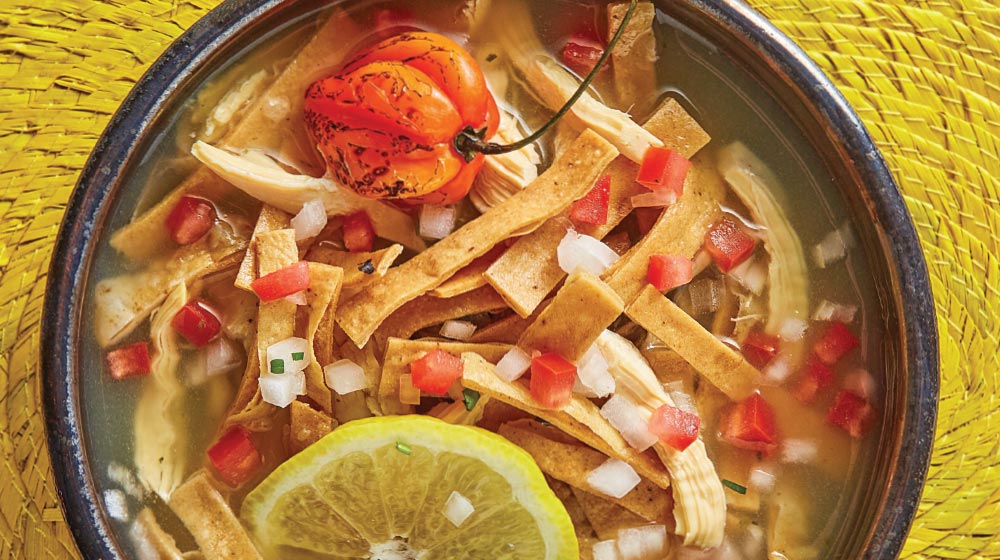
A favorite among locals in Yucatan. It is a simple chicken or turkey and vegetable soup; however, the lima Yucatecan (Yucatecan lime) gives it a unique citrus flavor. The lima (lime) in this soup is different from the limes in the United States and more prominent in size.
While there are variations on how it’s served, many places top the soup with deep-fried tortilla strips for some crunch, like a tortilla soup.
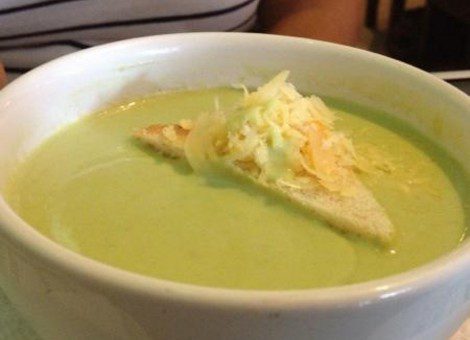
In Yucatan, crema is a room-temperature soup made with cheese and cream. Yucatan’s cremas are heavy for some, but they are a must-try for cheeses and rich foods fans. One of the most popular versions uses chaya (tree spinach). Still, they can be made with other ingredients, like mushrooms, asparagus, and corn.
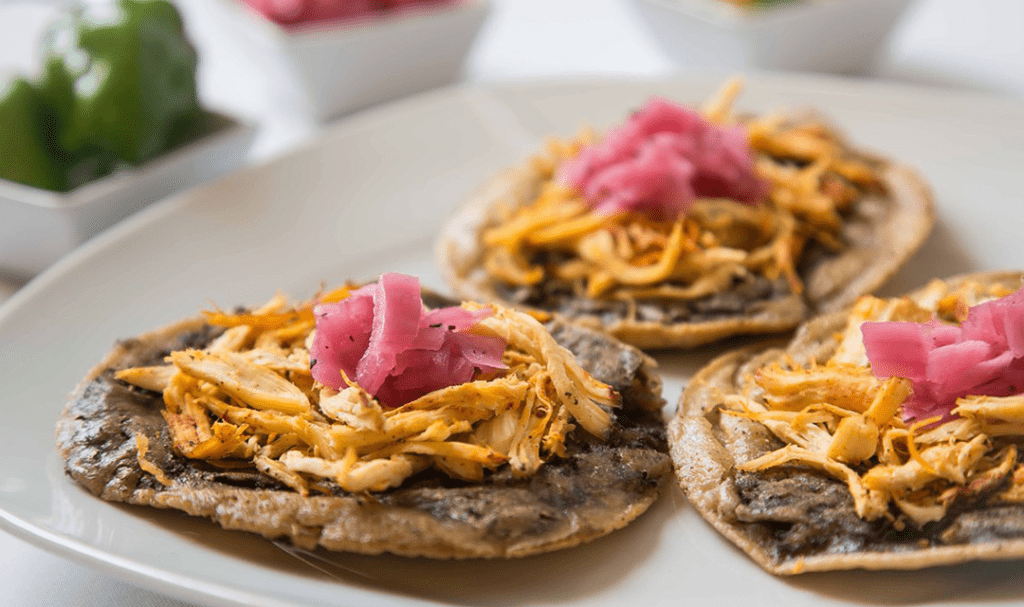
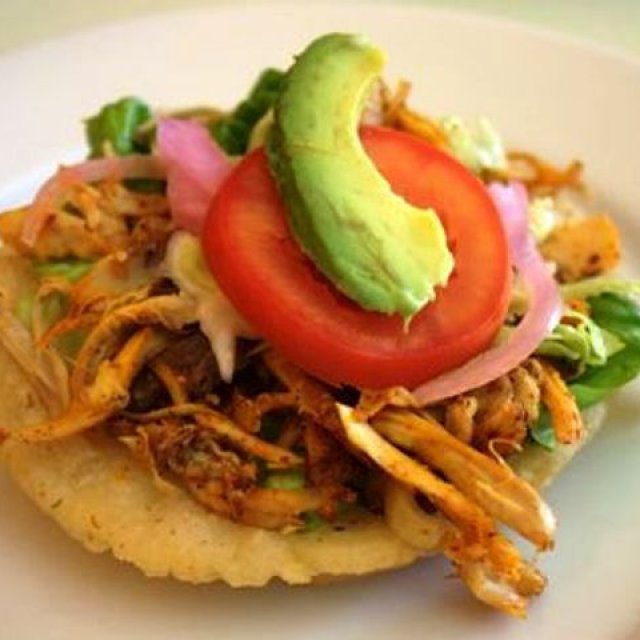
A panucho is a tortilla stuffed with mashed, refried black beans, then fried. it comes with meat and toppings like lettuce, tomato, and pickled red onions
Salbutes are a plain deep-fried tortilla. Thrown into scalding oil, they puff up immediately and emerge fluffy and ready to be filled with any number of local meat and toppings like the panucho.
Both panuchos and salutes are a must-try and are available prolifically across Yucatan.
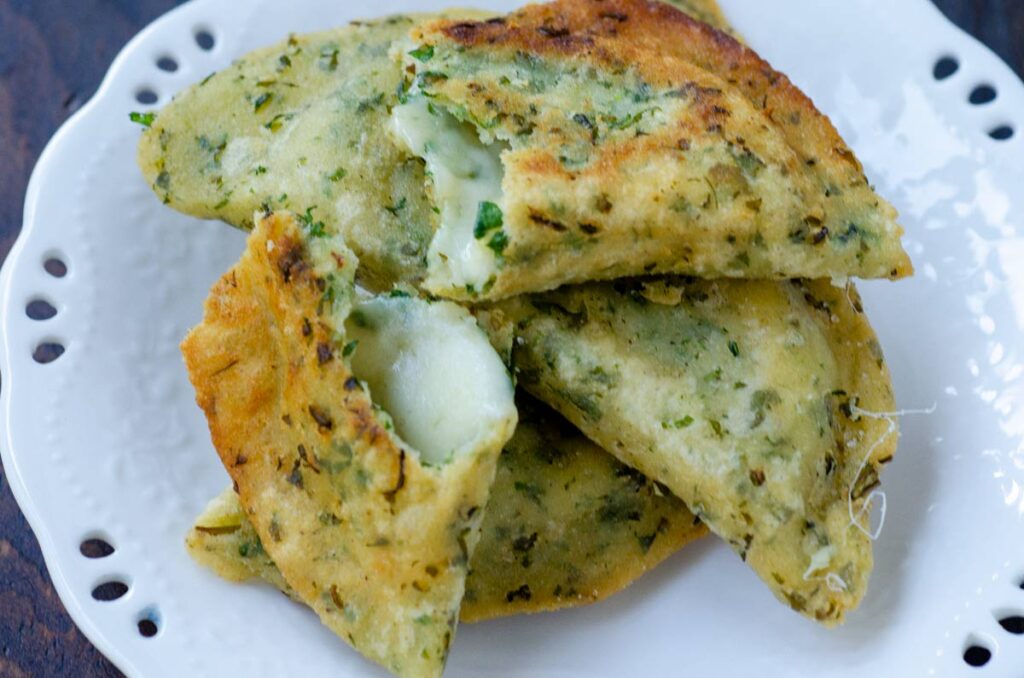
Empanadas are famous across Mexico and Latin America, but Yucatan has its unique variation. The empanadas de chaya are made with chaya, a perennial dark green veggie, and queso de bola or Edam cheese. The edam in Yucatan is pungent and salty and needs a lot of heat to melt. This produces an intensely flavored empanada with a dense cheesy center.
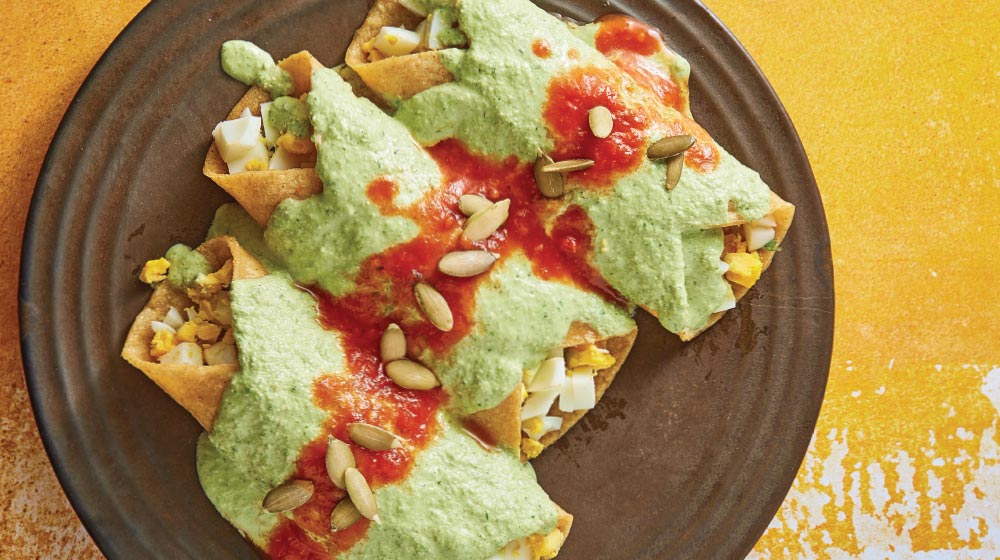
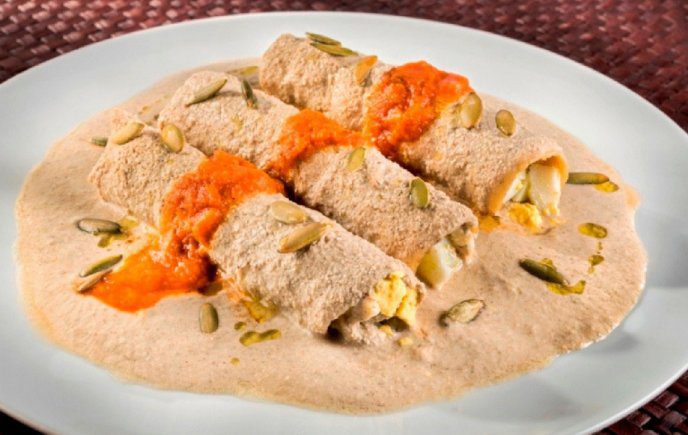
Yucatan is not a great place for vegetarians. Still, one Yucatecan vegetarian food is the papadzules (pronounced pa-pawed-zool-es).
Papadzules are regarded as one of the most ancient and traditional Mayan foods. These are tortillas filled with boiled egg coated in a special pumpkin seed sauce made specifically from Recado para papadzules and topped with a tomato sauce called chiltomate. Papadzules are light yet flavorful.
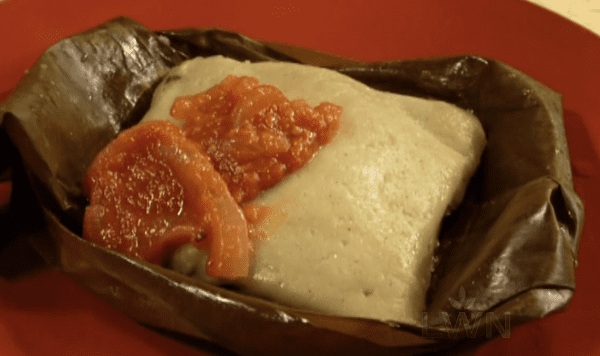
Tamales are a Meso-American staple that is not just present in the Yucatan. But they are prevalent here. Masa corn dough is stuffed with a filling (sometimes chicken or turkey or boiled egg) and steamed in a banana leaf.
There are a few Yucatan tamales that can only be found in this part of Mexico. Like tamales colados, pib (AKA mucbipollo), brazo de reina, and vaporcitos.
Vaporcitos are the most common type in Yucatan, usually called tamales Yucatecos outside the Yucatan Peninsula.
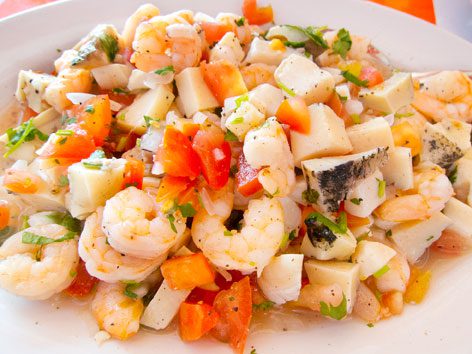
Ceviche is not originally Yucatecan, but they have adopted it as an essential part of their cuisine. Unlike Peruvian ceviche, where raw seafood is used, Yucatecan ceviche almost always features cooked seafood. Prawns, octopus, caracol (snails), or white fish mixed with the typical ceviche seasonings of lime, cilantro, tomato, and onion.
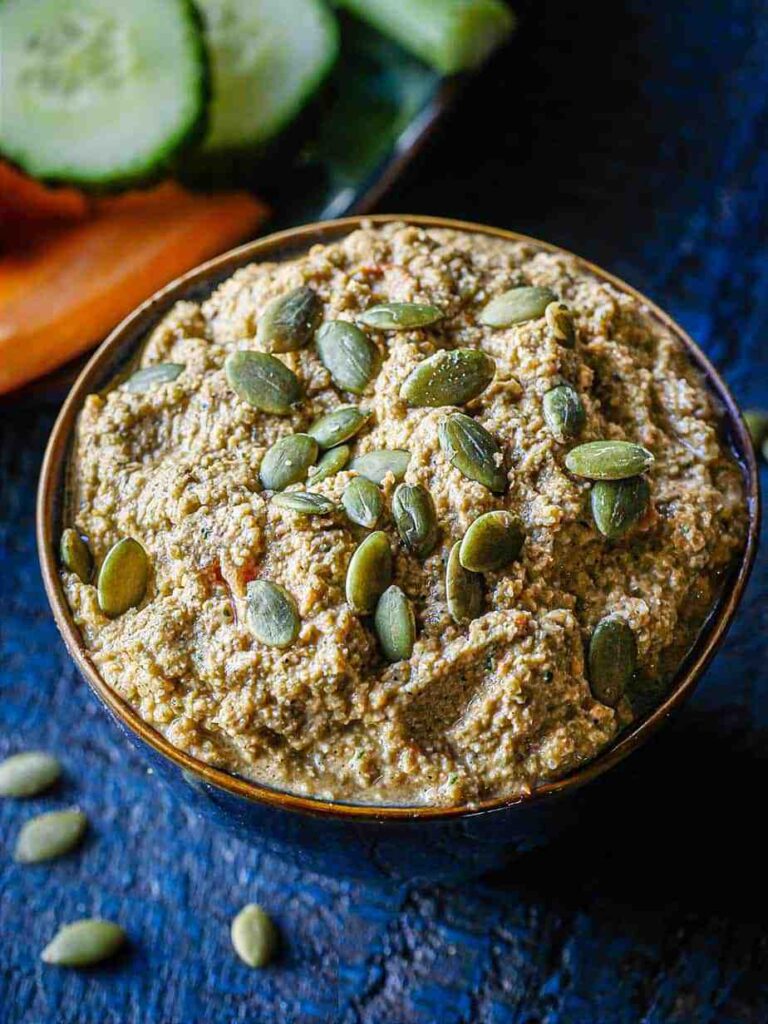
This ancient Mayan food is very delicious and among the best Yucatan botanas. It is a roasted tomato and pepita (pumpkin seed) salsa, with very little habanero pepper added for a slight kick. It has a strong umami taste and can be addicting.
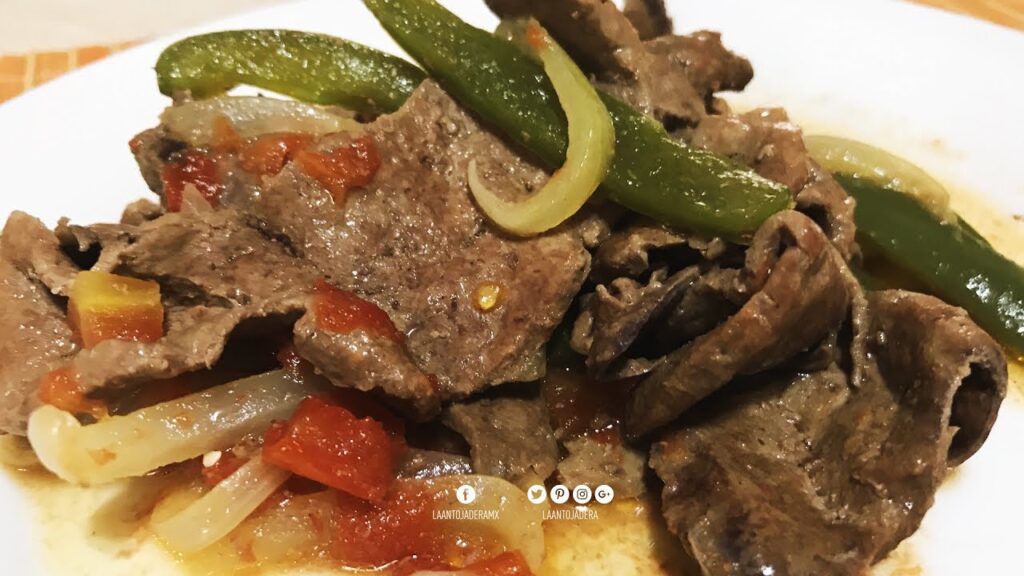
Higado entomatado is made with sautéed liver, onions, and roasted tomatoes. The umami in the tomatoes cut through the strong liver taste, resulting in a perfect and filling beer snack.
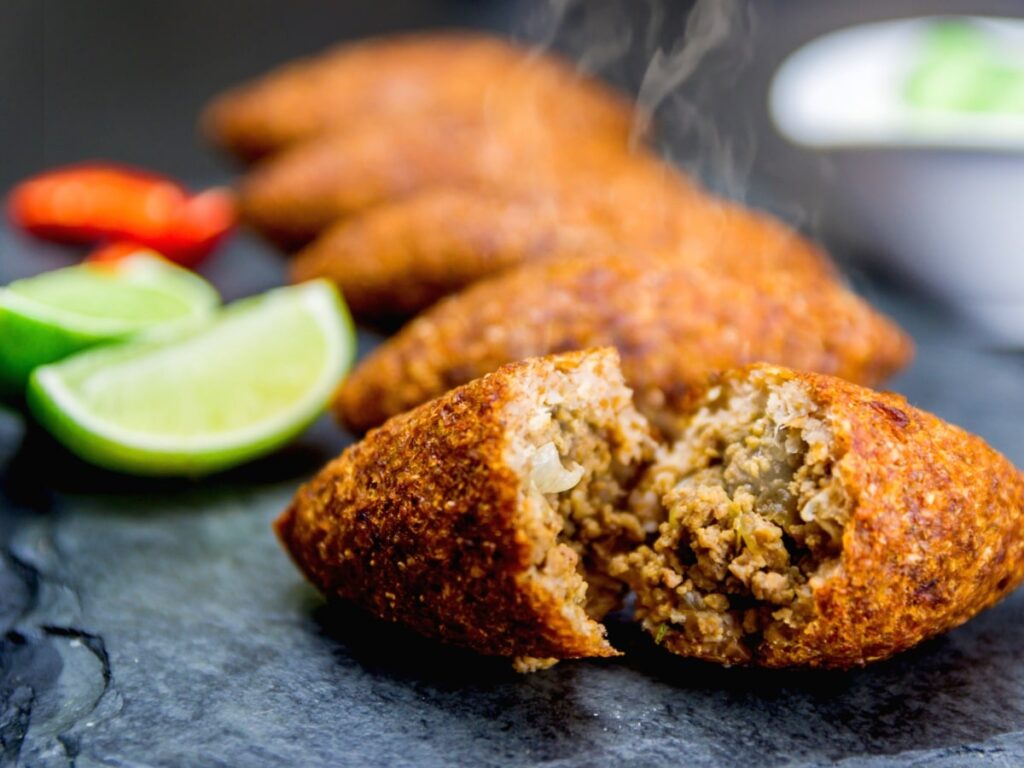
Kibbis are a Lebanese import that has taken hold in Yucatan after the first mass migration of Lebanese immigrants in the late 19th century. Typically it’s a mix of ground beef (originally lamb), and bulgar wheat often flavored with mint. They are deep-fried (unless otherwise stated) and typically come in a rounded diamond shape. Often hollow inside, sometimes with a filling of queso bola (Edam cheese) or cabbage salad.
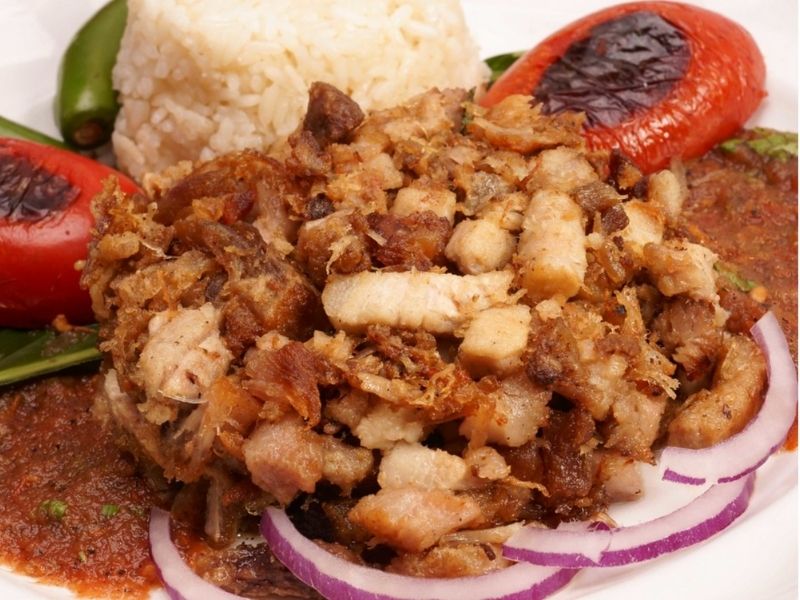
The main protein in Yucatan cuisine is pork. Castican is a Yucatecan pork belly preparation. The meat is slow-cooked in its own lard, then baked to crispy perfection. It is often compared to chicharron, though castican is crispier.
For bacon lovers, castican is a must-try. You can order castican in a torta, salbutes, or panuchos, and by the kilo to make your own tacos.
Traditionally, the main meal of the day in Yucatan is eaten between 1pm and 6pm. Many traditional restaurants will be closed by 6pm. Some more tourist-orientated places will stay open until 10pm. You’ll generally eat other cuisines, not Yucatan food, if you want an evening meal.
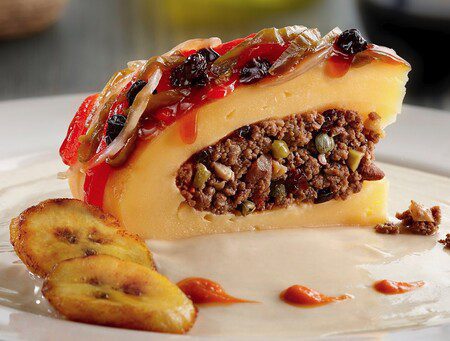
Queso Relleno is Yucatan’s ultimate fusion dish, heavily influenced by the European and Dutch ex-pats who moved to Yucatan.
Queso Relleno is a hollowed-out Edam cheese (Holland) filled with spiced minced pork (Spanish), topped with a k’ool Blanco sauce (Mayan), and finished with rich tomato sauce (Mexico/Yucatan) and olives (Mediterranean). Amazing combination!!! After the Edam ball is hollowed and stuffed. The newly-formed ball gets wrapped in banana leaves and steamed until the cheese semi-melts
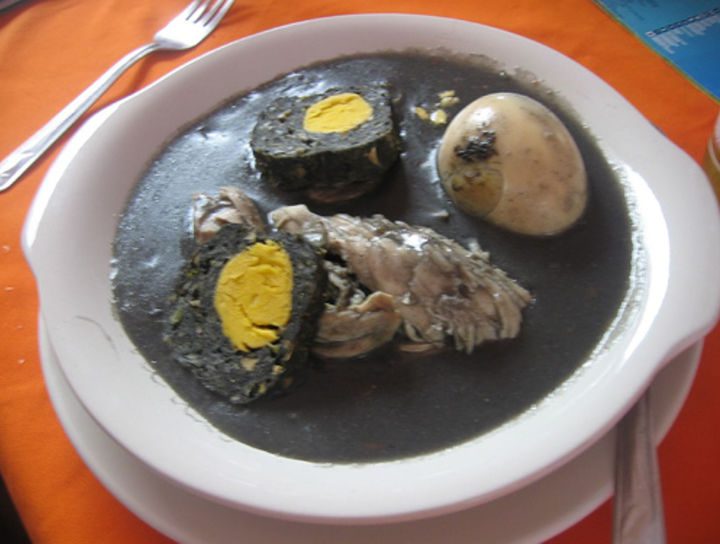
Relleno Negro is a stew-like dish consisting of turkey meat in a jet black recado negro & turkey stock sauce, thickened with masa. Recado’s jet black color may look weird at first, but this is a delicious Yucatecan dish.
The method of preparation for this dish is insanely complicated. The most important factor is the recado negro seasoning blend consisting of dried chile de árbol (tree chili) or chile ancho (a milder chili) are burnt; then the ashes are ground down into the recado negro.
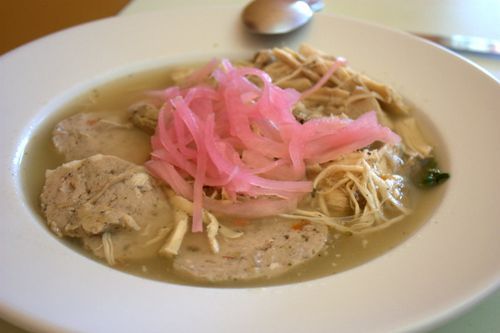
It is Similar to Relleno Negro, but with the recado blanco spice blend, which is peppery with a hint of cloves. Recado Blanco spiced meatballs and roasted turkey are added to the stew.
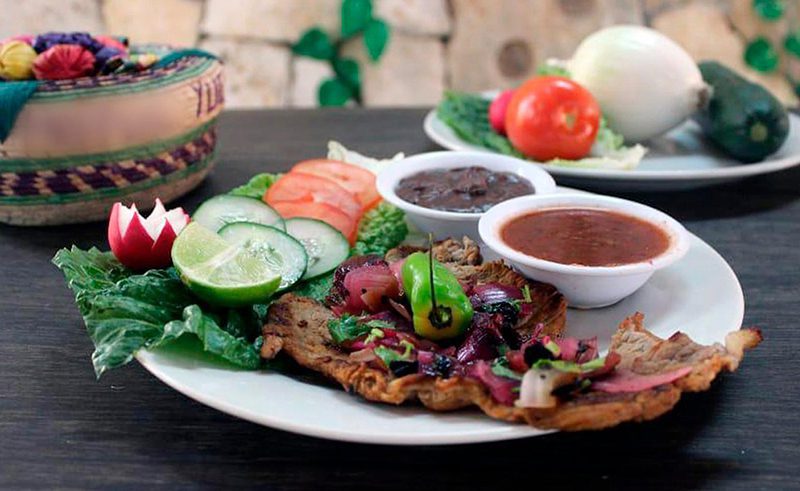
Poc Chuc is a wood-fired, marinated thin pork filet that’s only seasoned with Seville orange juice and served with typical condiments, purple pickled onion, and chiltomate
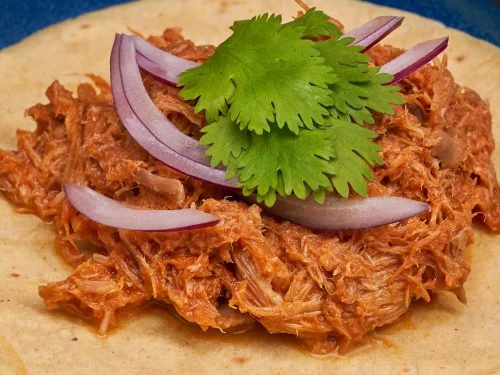
This is the king of Yucatan cuisine. This beloved dish is made with marinated pulled pork with all the Yucatecan flavors and spices. A whole pig or the pork leg is marinated in achiote, Seville orange, and other spices, then wrapped in banana leaves and slow-roasted in an underground oven called a pib. The meat should emerge falling apart and with a brown-orange color.
Every bite should be juicy and rich. Cochinita is served in tortas or as an order with tortillas. But, more recently, cochinita pibil has been available in a panucho or salbute.
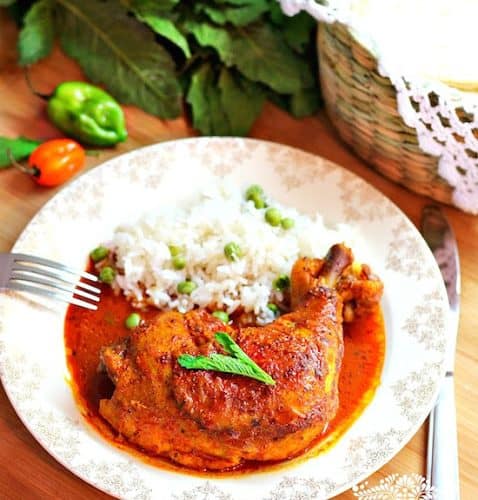
Pollo pibil is made the same way as cochinita pibil, using chicken instead of pork. While you won’t find it everywhere, some places offer it to accommodate those who don’t eat pork.
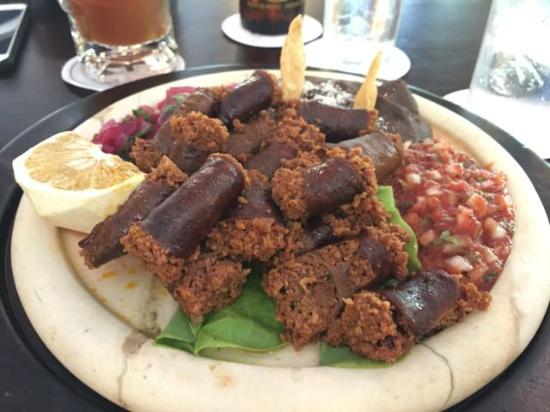
This smokey and typically very dry and dense sausage hails from the city of Valladolid in Yucatan state. It usually has an intense flavor. Although locals love it served whole, for a more international palate, it is best enjoyed when used as an ingredient in other dishes as it adds distinctive character to stews, etc.
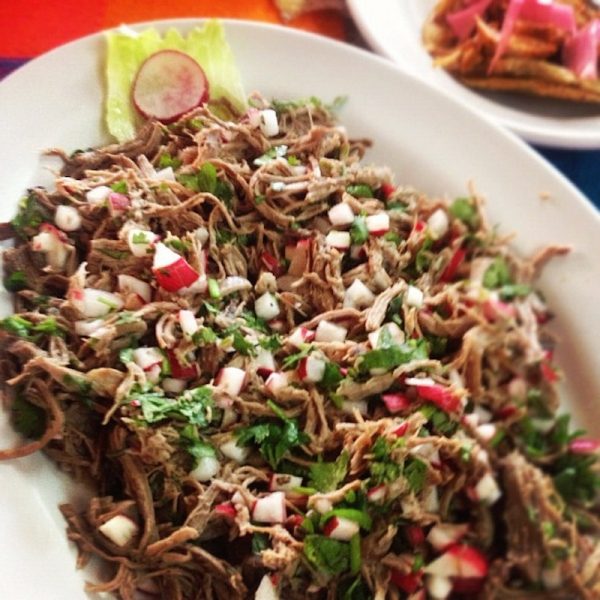
Salpicon is popular throughout Mexico. It is a shredded meat dish often served cold, along with different veggies like tomatoes, avocado, onions, radish, and cilantro.
Yucatan has its own version of salpicon; it is called tzic de Venado, which is made with venison (deer) instead of beef.
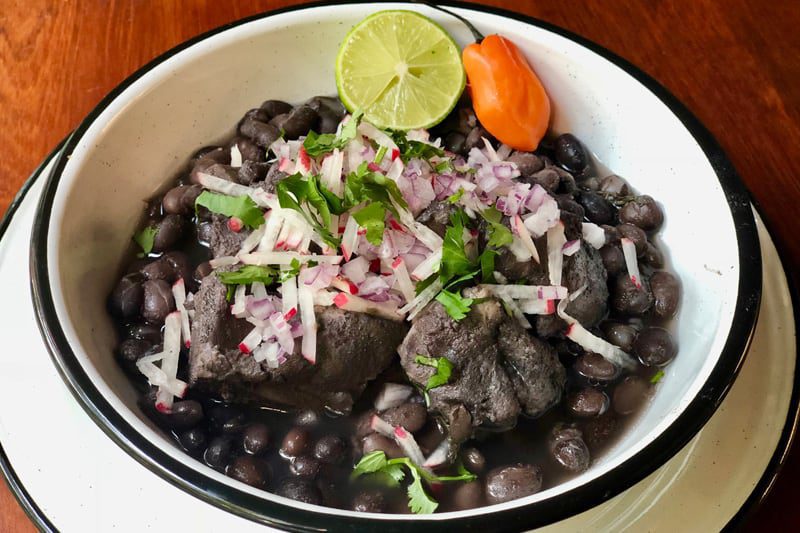
This typical home-cooked meal would have always got the family together for Monday lunch; therefore, this dish traditionally only appears on Mondays. The pork and beans slowly stewed together. Served either all together, separated, sometimes with the beans mashed, or in the soup with just the pork separated. Fall apart pork and rich, tasty beans will satisfy a hearty appetite.
“If you have been to Brazil, there's a similar dish called Feijoada, but its origin can be traced to ancient Roman cuisine. Most likely, this was brought by the Spaniards, who have their own version called Fabada. Fabada replaces the black beans with fabes de la granja (another type of bean) or by Portuguese, who are the ones who brought the Feijoada to Brazil.”
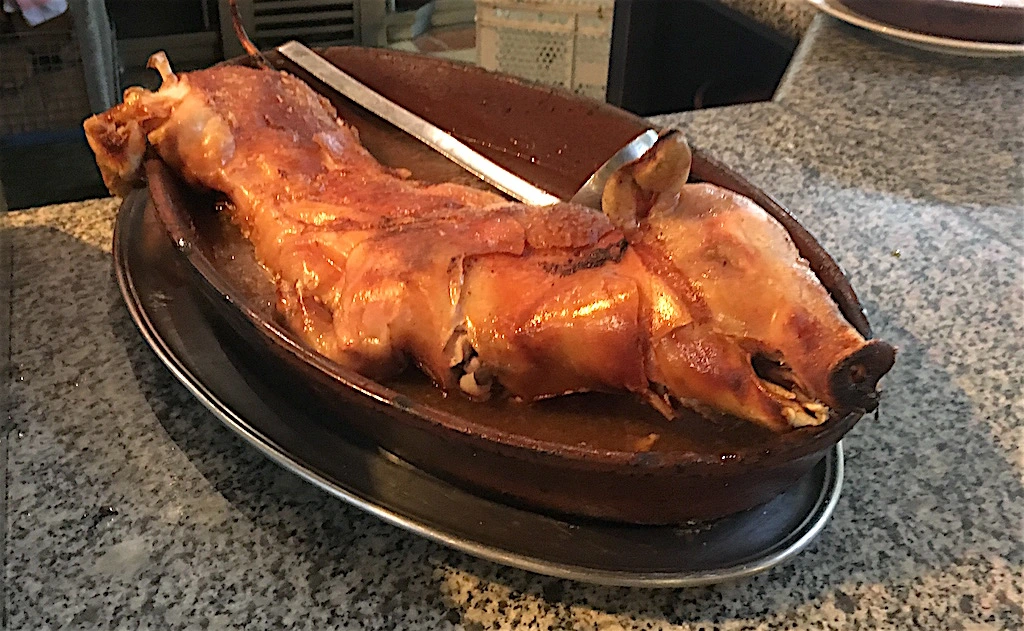
Lechon is slow-roasted pork, popular in the Philippines and Latin America. While it’s not exactly an endemic Yucatan dish, it is one you can get everywhere in the Yucatan nowadays.
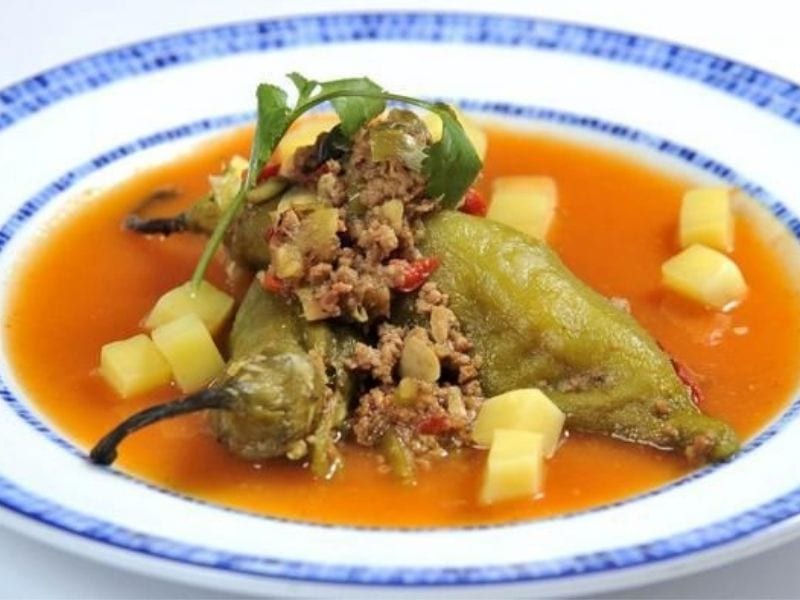
The big local yellow chilis are stuffed with spiced meat and covered with the popular white sauce and tomato sauce. It’s like the queso relleno, but with chili for the outer skin, rather than Edam cheese. Mild to medium spice.
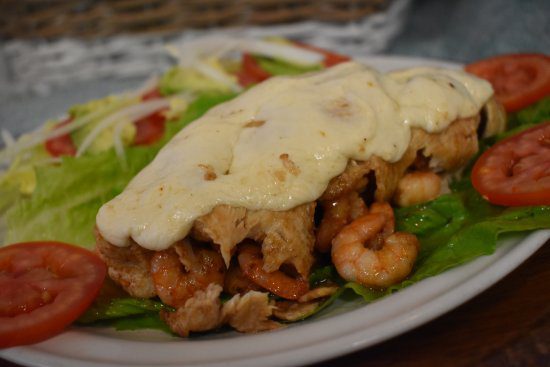
Stuffing fish with shellfish is not originally from Yucatan. Still, adding some local ingredients like longaniza de Valladolid certainly makes the local variety hard to try outside of the Yucatan.
Also, in Yucatan, you can find Calamari stuffed with chopped shrimp and longaniza
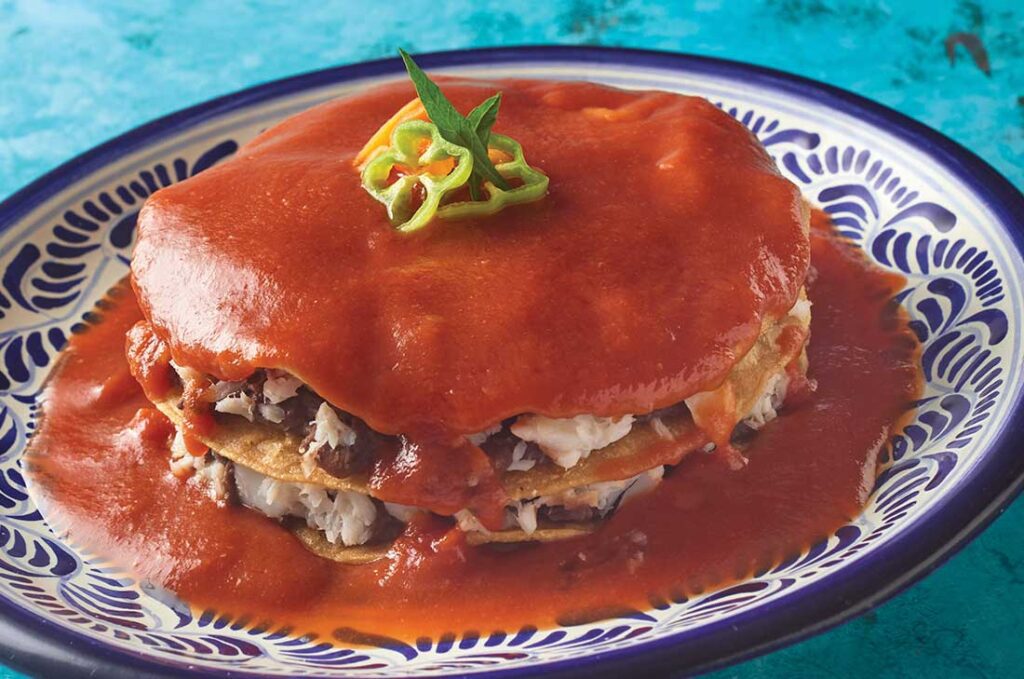
You could say that Pan de cazón is Yucatan’s seafood lasagna. It’s made with alternating layers of fried corn tortillas and flaked dogfish, then smothered in a tomato sauce. Dogfish is common in Yucatan; it is similar to a codfish with a milder, sweeter flavor.
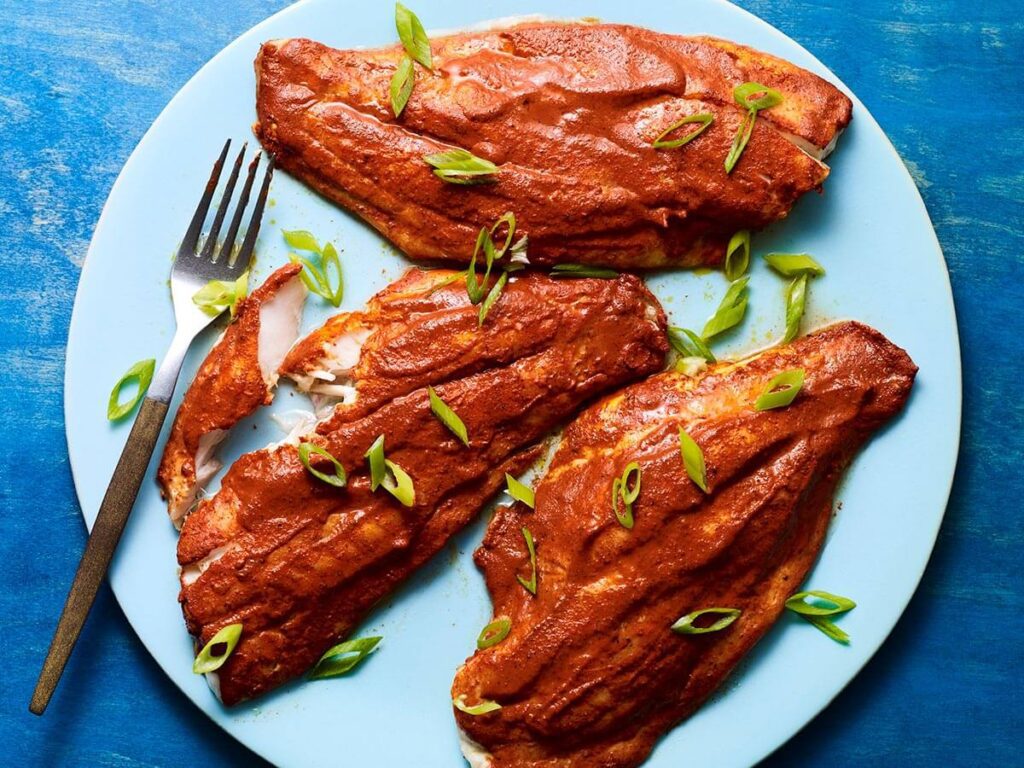
Tikin xic (pronounced tee-keen-sheek) is a juicy, flavorful dish. It is a whole fish marinated in achiote paste and Naranja agria, then wrapped in a banana leaf and baked under a wood fire, imparting a smoky flavor.
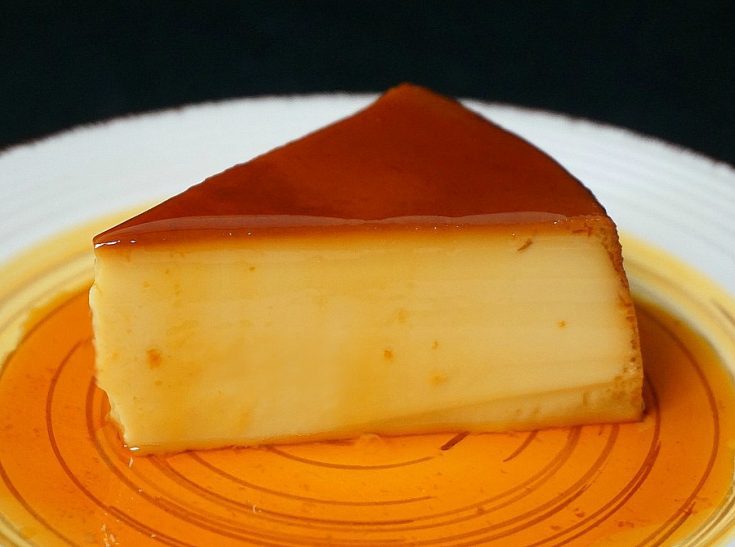
Flan can be found all over Mexico, and it’s so popular that I’m sure you have seen it or tried it in Mexican restaurants outside of Mexico.
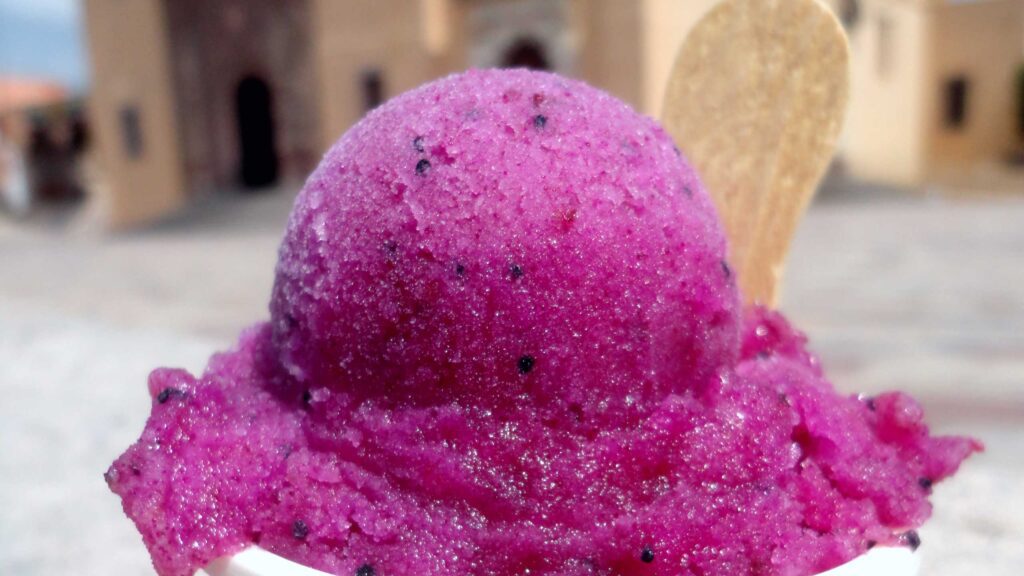
Nieves means “snow,” it is basically a cross between ice cream and shaved ice. They are often made with fresh, local fruits or sweet ingredients like chocolate and sold in local mercados (markets) or on the street by vendors. In Yucatan, you should try pitahaya (dragon fruit), maracuya (passion fruit), mamey (sapote), coco (coconut), and mango.
“Talking about the word nieve. Did you know that name Nevada (referring to the state of Nevada) means covered in snow? I know some people originally from Nevada who had no idea what the term means, and they are surprised it is a Spanish word. Don't forget Nevada was Mexican territory, therefore the name.”
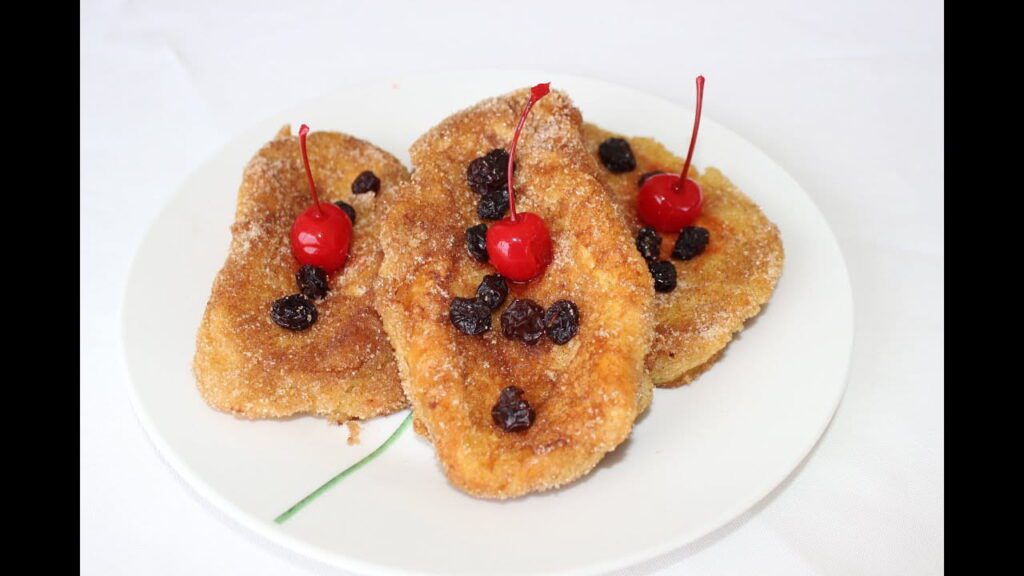
Caballero Pobre is a Yucatecan dessert with a very rich flavor (not sure why the name is poor, though). It is a version of French toast, or torrejas, common throughout Latin cuisine.
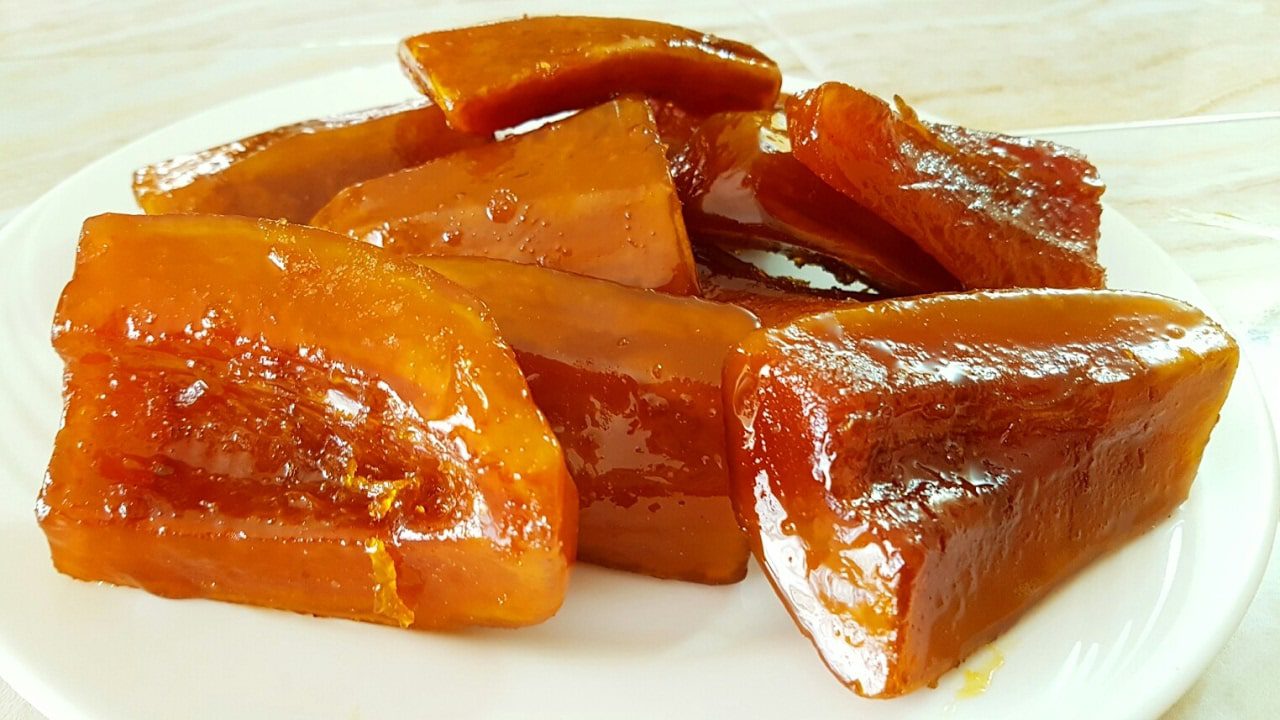
This popular Yucatan dessert is a slow-cooked papaya with sugar, cinnamon, and vanilla; then served cold, soaked in syrup, and accompanied by ice cream, coconut, vanilla cake, or chunks of queso de bola.
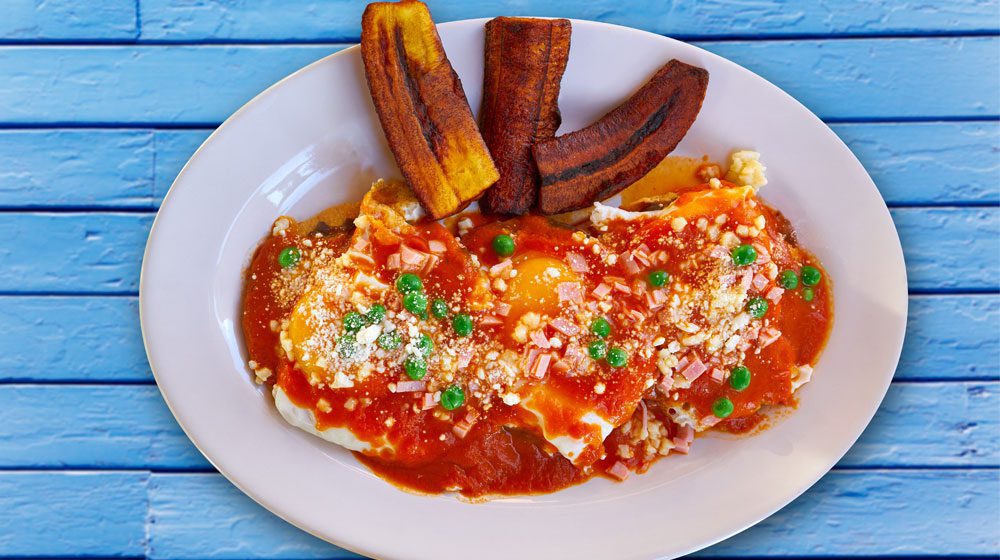
Despite the strange looks, it’s a hearty, delicious Yucatecan breakfast that you won’t find much outside of this region.
The dish starts with tortillas laid out on a plate, then pureed black beans and sunny-side-up eggs are placed on top. Then the eggs are covered with peas, sweet plantains, and diced ham. Finally, the whole dish gets smothered in salsa roja (mild red salsa).
The dish gets its name from the town where it was invented, Motul, in Yucatan state. However, legend says that this dish was created by accident. The governor of Motul at the time, Felipe Carrilo Puerto, was famous for liking his lunches served all on different plates, so he could combine each condiment and food item as he pleased. At one particularly large lunch, the La Sin Rival restaurant kitchen ran out of serving plates. So the chef served eggs with all condiments on one plate, and that’s how the Huevos Motuleños were born.
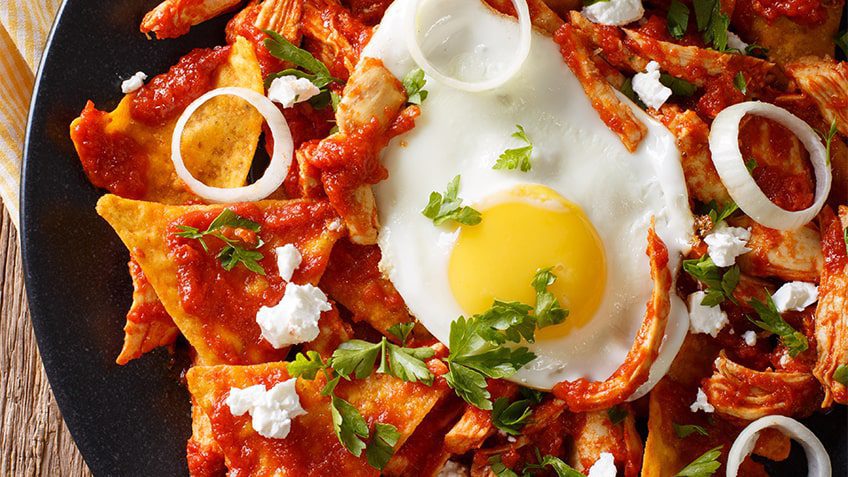
Not exactly originally from Yucatan food, but definitely one of the most popular Mexican breakfasts of all time. Authentic chilaquiles start out with a plate of totopos (tortilla chips), then covered in red or green salsa, or even mole sauce, and topped with a fried egg or meat, cheese, and sour creme.
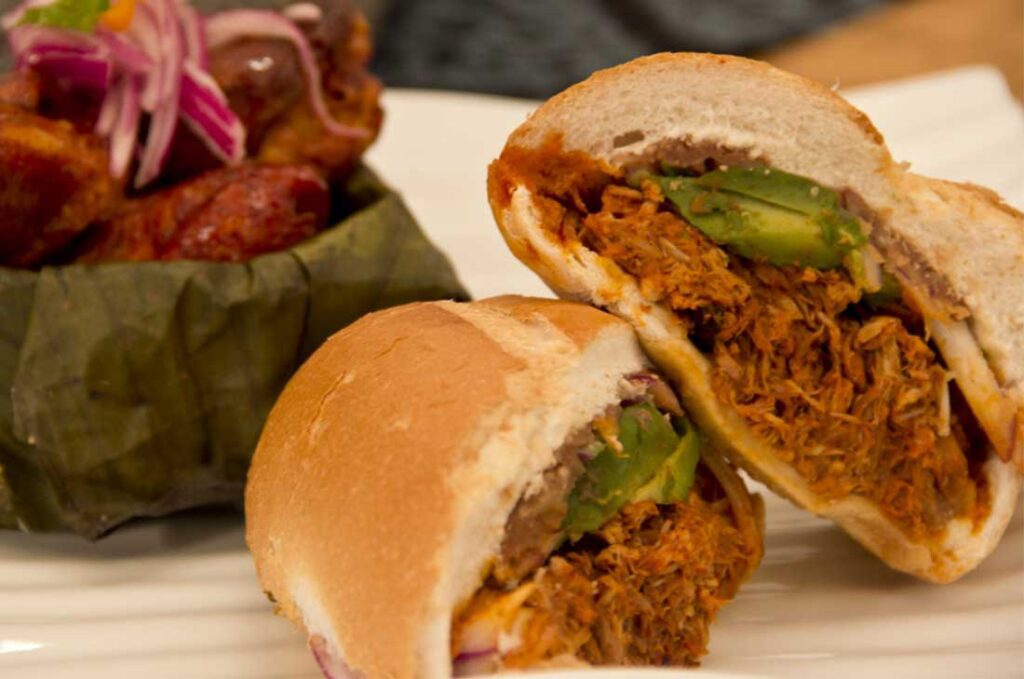
In Mexico, a torta is as crucial as a taco. Tortas are a famous breakfast, but they are equally famous for lunch, dinner, or as a snack. Different tortas are famous in other parts of Mexico, but they all use the same bolillo bread. This soft hoagie roll is one of the most beloved and best Mexican bread.
In Yucatan the best tortas are made with local meats, so you can find tortas de cochinita pibil, tortas de lechon, and tortas de poc chuc.
Chaya is a popular veggie used in many Yucatan foods. However, it is also used in drinks, hence the piña con chaya drink. Chaya can have a semi-bitter or earthy taste, like spinach, but the sweetness of the pineapple cuts through it in this drink.
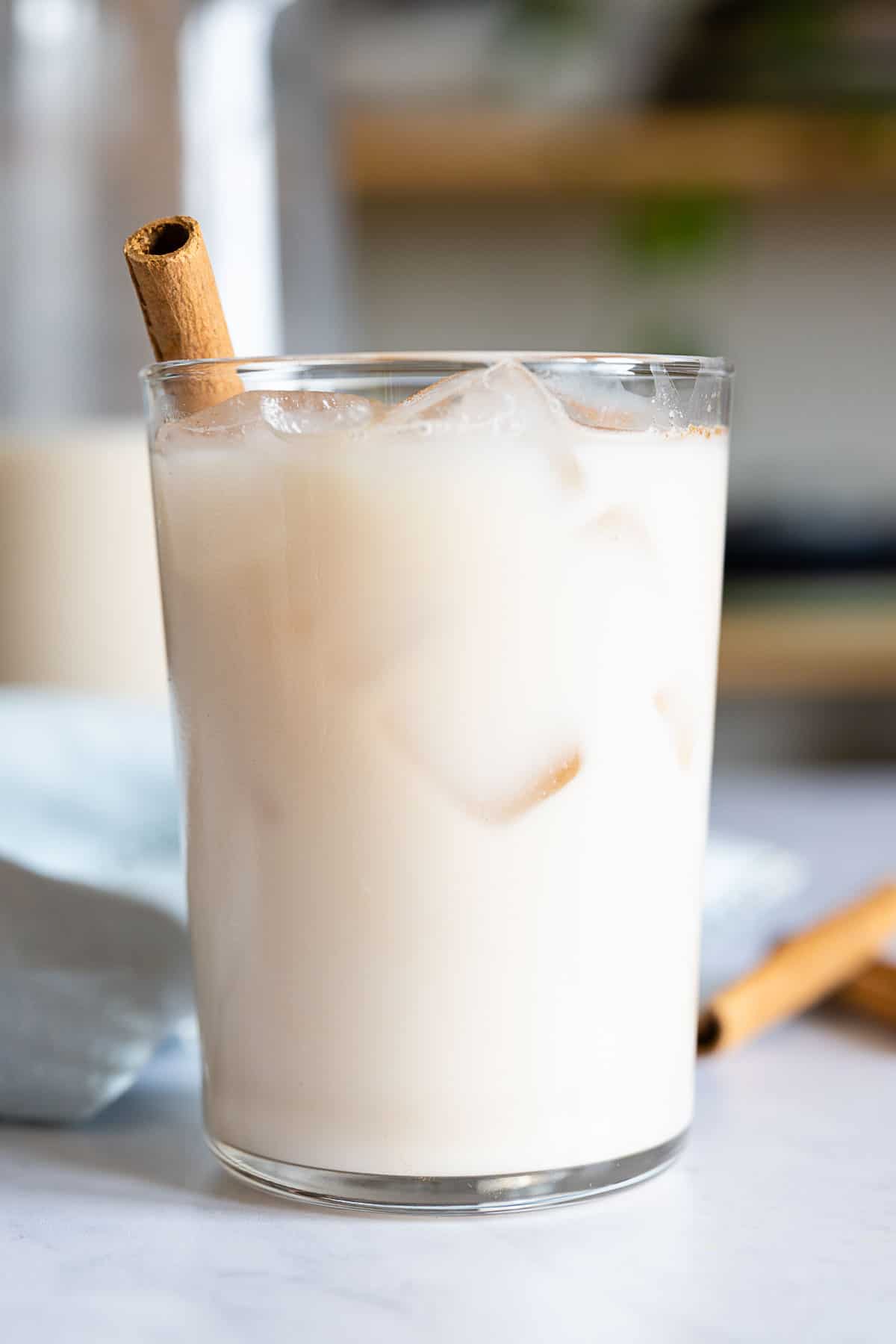
Horchata is a cold ground rice-based drink usually mixed with cinnamon, almonds, and too much sugar. I find it unbearably sweet, but Yucatecans love it!
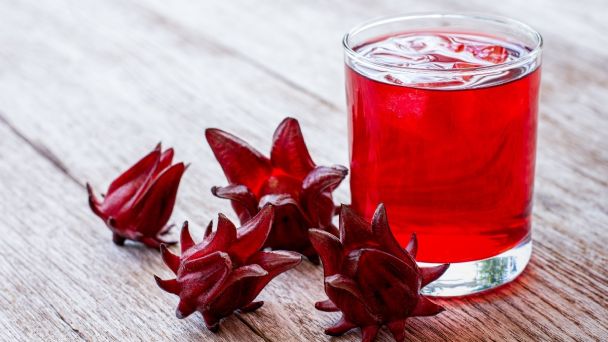
Jamaica (pronounced ha-my-ka) is a purple-colored iced beverage made with hibiscus flowers and too much sugar.
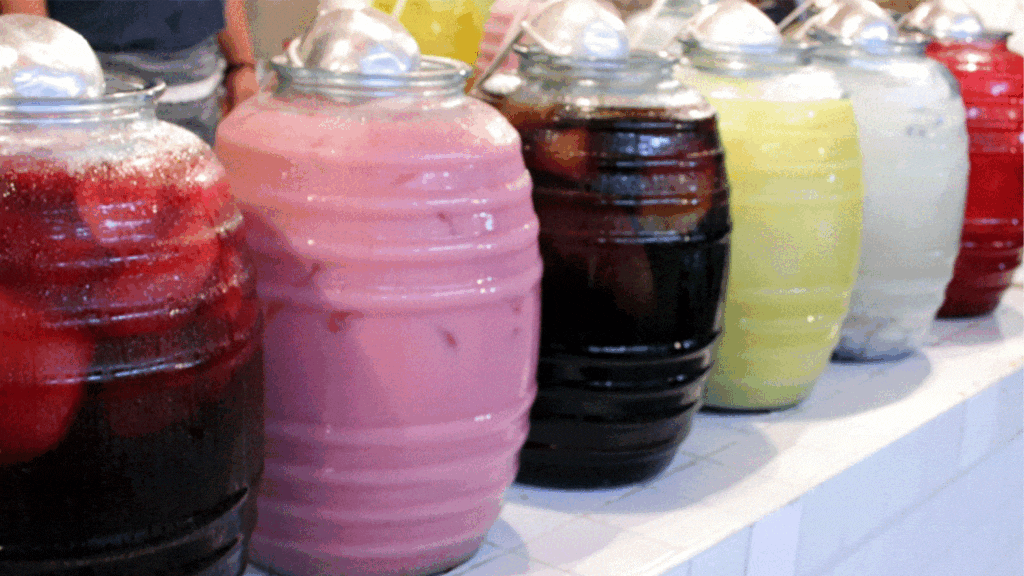
Aguas Frescas, meaning “fresh water,” are among the Yucatan drinks people flock to on hot days to beat the heat! Many things can be classified as agua fresca, including horchata, jamaica, or fresh fruit.
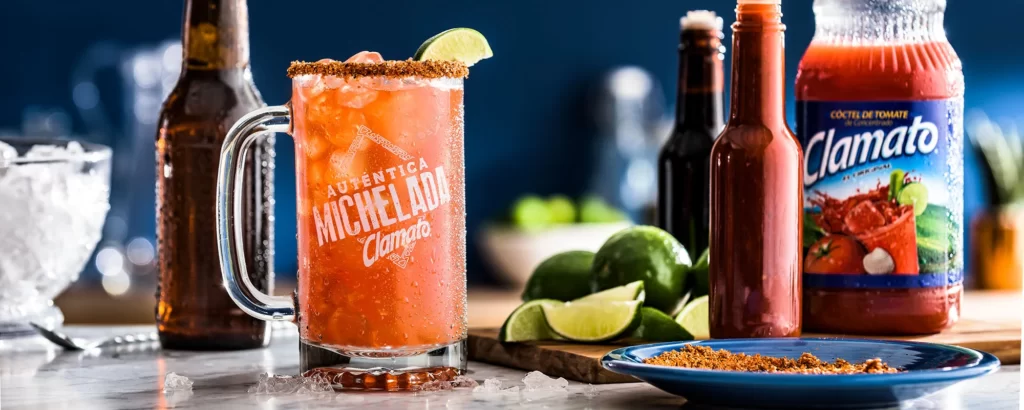
There aren’t many beer cocktails out there, but the Michelada is among the best. A traditional michelada is made with your choice of beer (both dark and light beer works), Clamato juice, Worcestershire sauce, assorted spices like Tajín, fresh lime juice, and a tamarind rim.
As micheladas are very popular, different places prepare them with slightly different variations. For this reason, they’re often compared to Bloody Marys, with each restaurant and cocktail maker adding their unique spin to the classic recipe.
The Chelada is the most basic, consisting mainly of lime with beer.
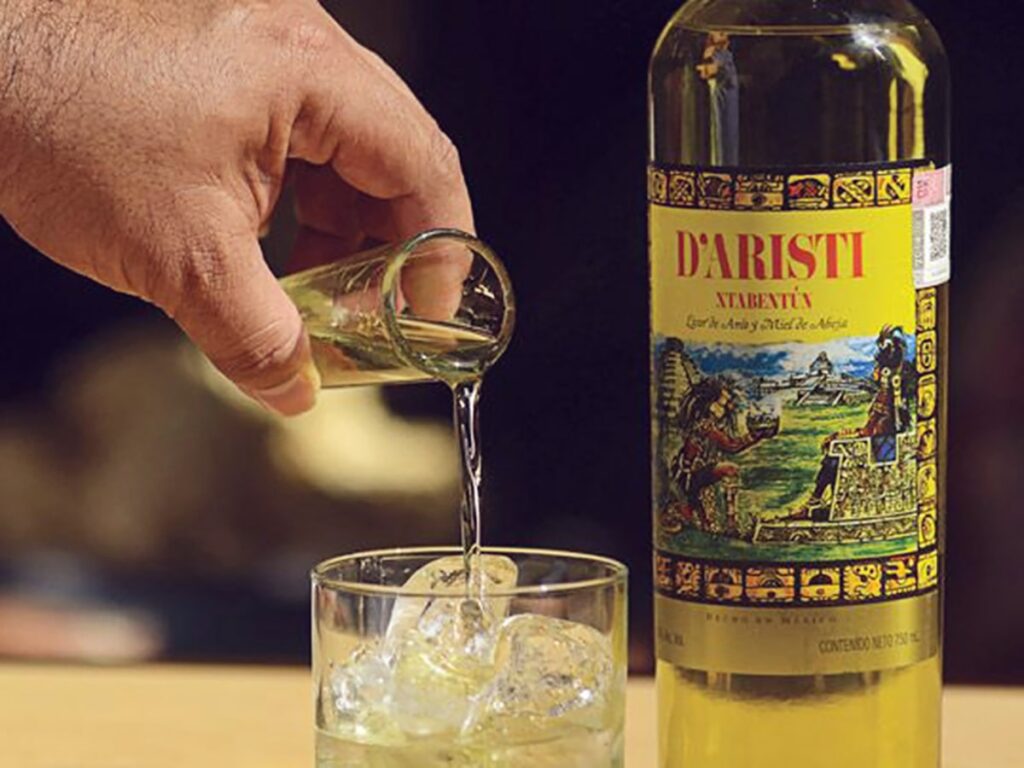
Xtabentun (pronounced shtab-en-tune) is an ancient Mayan liquor that has been made for thousands of years. This liqueur is made with anise seed and fermented honey produced by honey bees from the nectar of xtabentún flowers — a very rare plant to find in the wild. Next, rum is added to the anise and honey mixture, and it’s all left to ferment, creating the smooth, sweet xtabentun liquor.
To drink, many locals have it straight up or over ice; some even add in an extra spoonful of honey. Some will add it to their coffee or make a Mayan Coffee, which is coffee mixed with a shot of tequila and a shot of xtabentun.
| Cookie | Duration | Description |
|---|---|---|
| cookielawinfo-checkbox-analytics | 11 months | This cookie is set by GDPR Cookie Consent plugin. The cookie is used to store the user consent for the cookies in the category "Analytics". |
| cookielawinfo-checkbox-functional | 11 months | The cookie is set by GDPR cookie consent to record the user consent for the cookies in the category "Functional". |
| cookielawinfo-checkbox-necessary | 11 months | This cookie is set by GDPR Cookie Consent plugin. The cookies is used to store the user consent for the cookies in the category "Necessary". |
| cookielawinfo-checkbox-others | 11 months | This cookie is set by GDPR Cookie Consent plugin. The cookie is used to store the user consent for the cookies in the category "Other. |
| cookielawinfo-checkbox-performance | 11 months | This cookie is set by GDPR Cookie Consent plugin. The cookie is used to store the user consent for the cookies in the category "Performance". |
| viewed_cookie_policy | 11 months | The cookie is set by the GDPR Cookie Consent plugin and is used to store whether or not user has consented to the use of cookies. It does not store any personal data. |